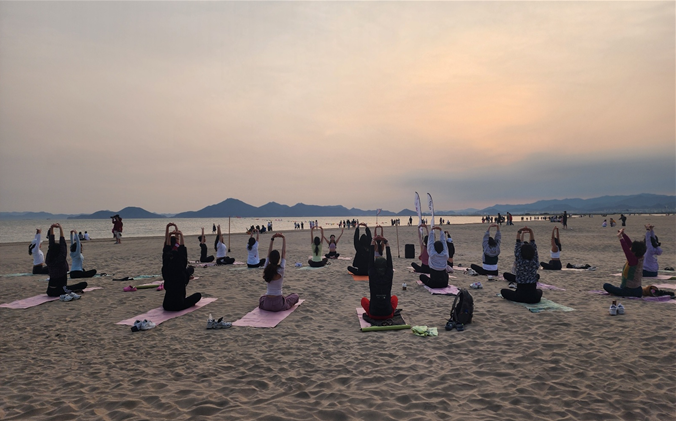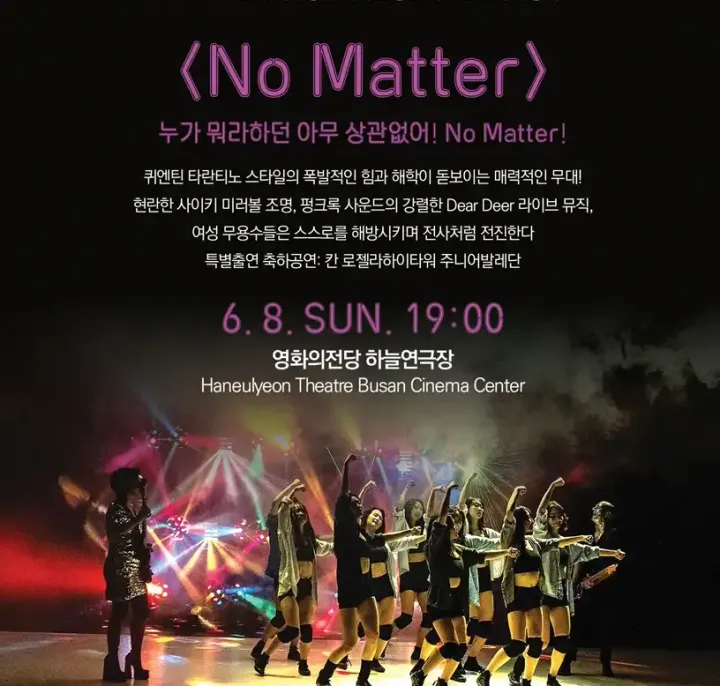Wellness, Movement, and Stillness Meet in Busan’s Coastal Retreats
Busan's Ocean healing program blends yoga, pilates, and sound meditation into a coastal wellness experience that redefines city tourism.

Busan, South Korea — On an early summer morning, the sands of Gwangalli Beach are quiet, save for the slow rhythm of breath and movement. Yoga mats are aligned in soft parallel rows. The waves roll in, and as the sun lifts over the shoreline, a small group of locals and travelers begin a shared ritual — stretching not only muscles, but the boundary between tourism and healing.
This is not a promotional shoot for a luxury retreat. It’s a weekly public program hosted by the city of Busan — part of its Busan Ocean Healing Program 2025, which blends physical movement, coastal ecology, and sensory awareness across nine waterfront locations. Between May and July, it turns the city’s most iconic beaches into open-air studios for yoga, running, and meditative walking, redefining what it means to travel to, and through, a city by the sea.
Around the world, wellness has moved from a niche offering to a global shift in how people travel. Post-pandemic, the focus has drifted from fast itineraries to slow presence; from landmarks to lifestyle. Travelers now seek restoration as much as recreation, and Busan — a dense, dynamic port city framed by open water — is beginning to offer both.
This year's program, now in its fifth iteration since launching in 2021, presents a different kind of itinerary: one that unfolds over breaths, steps, and silent observation. It signals a quiet but significant shift in city-led tourism — away from spectacle and toward rhythm, atmosphere, and bodily awareness.
The program’s core offerings are simple in form but layered in intent — each designed to engage the body with its surroundings, not in opposition to nature, but in alignment with it.
Among the program’s most established components, Beach Yoga is held early on weekend mornings across Busan’s major beaches. Participants gather barefoot on the sand, the terrain subtly shifting beneath them as they move through a series of slow, mindful poses. There is no soundtrack beyond the sound of waves — constant, unscripted, and immersive. Instructors guide the session not with commands but with calm gestures, encouraging participants to align their breathing with the natural rhythm of the sea.
As the sun begins to set, Sunset Pilates takes place at western-facing beaches such as Dadaepo and Songdo. The sessions are scheduled not merely by time, but by atmosphere, using the changing sky as a visual cue for breath and motion. Participants stretch into poses silhouetted against hues of orange and blue, their balance tested as much by the shifting light as by the physical routines themselves.
For those seeking a more vigorous experience, Sweat Beach delivers high-intensity workouts in the form of rotating CrossFit circuits, step-box routines, and strength-building drills conducted directly on the sand. The unstable surface enhances physical exertion, while the surrounding environment — crashing waves, sea breeze — provides a natural counterbalance. “You feel everything more here,” noted one returning participant. “The effort, the fatigue, the reward — it’s all magnified by the setting.”
Ocean Running offers yet another modality, inviting participants to jog along the shoreline at their own pace. With options for slow, meditative pacing or structured intervals, the experience is designed not for speed or medals but for presence. It transforms running from a competitive activity into a reflective ritual.
Each session is priced at 10,000 won (approximately $7 USD), and participation is limited to small groups of around 30 to maintain a sense of focus and connection. All activities require advance online registration, reinforcing the program’s intention of mindful engagement rather than casual attendance.
In addition to movement-based activities, the Busan Ocean Healing Program includes a series of immersive experiences designed to enhance sensory awareness and encourage stillness. These special sessions, including “Sound Walking” and the “Yacht Retreat,” place emphasis not on exertion, but on intentional presence.
Sound Walking, offered three times in June, invites participants to walk slowly through nature trails or along coastal paths equipped with directional headsets. The experience shifts attention away from movement and toward auditory perception — from bird calls to footsteps, water, and wind. Unlike conventional fitness walks, these sessions encourage listening rather than conversation, and presence rather than destination.
A similar philosophy informs the Yacht Retreat, which takes place on anchored or gently cruising vessels along the Busan coastline. Participants engage in guided meditation enhanced by the use of Tibetan singing bowls and ambient maritime acoustics. The subtle motion of the sea contributes to the meditative effect, turning the natural environment into a core element of the session itself.
These experiences deviate from traditional wellness models that emphasize control or performance. Instead, they foster a mindset of release — of slowing down, relinquishing structure, and reorienting attention. While held less frequently and with slightly higher costs, these programs consistently attract participants seeking depth rather than novelty. They underscore the notion that the natural world, when approached with intention, can serve as both setting and instructor.
Viewed collectively, Busan’s approach to coastal wellness reflects a broader rethinking of what urban tourism can provide. The program reframes wellness not as a luxury product, but as public infrastructure — one integrated into the rhythms and spaces of everyday life. In this way, it aligns with the city’s broader urban strategies, including walkable neighborhood planning and ecological access.
Unlike traditional inland retreats that rely on isolation, Busan's geography offers a rare blend of proximity and openness. Here, public beaches, riversides, and harborfronts are reinterpreted not as amenities, but as collaborative environments where physical and emotional well-being can unfold in tandem.
The initiative also draws on Korea’s longstanding cultural traditions of integrated wellness — from communal bathhouses to temple stays — translating them into an outdoor, movement-based format accessible to a wider audience. In doing so, it encourages not passive leisure, but conscious engagement with the environment.
While modest in infrastructure, the Busan Ocean Healing Program advances a quiet provocation: that a city’s value is not measured solely by its scale or speed, but by its capacity to foster rhythm, reflection, and restoration. These experiences are not dramatic or spectacular by design. They are, instead, deliberate — structured to support personal recalibration in shared, public space.
In a fast-moving world, such simplicity may offer the most resonant form of hospitality



Comments ()